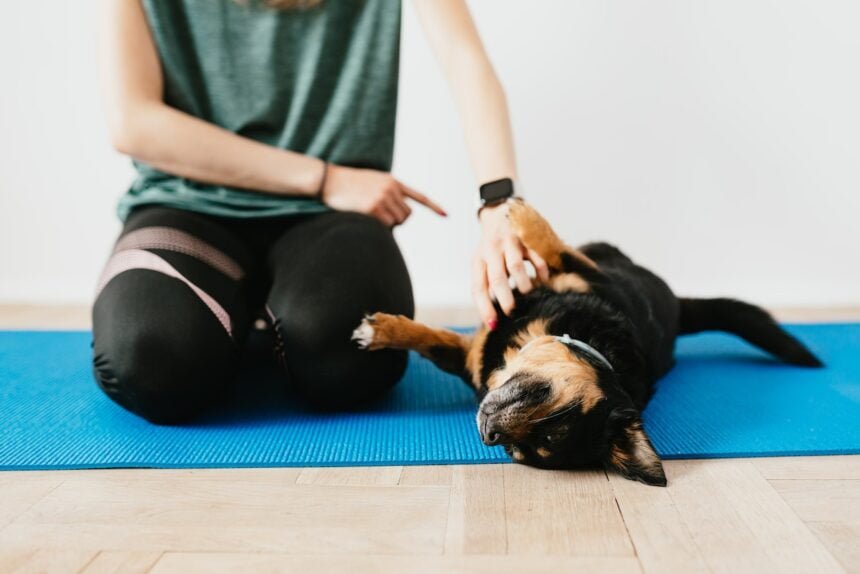Bringing a new canine companion into your life is an exciting adventure filled with love, loyalty, and companionship. However, as a responsible dog owner, it is essential to understand that the key to a well-behaved and happy dog lies in effective training. Training your dog not only ensures their safety and the well-being of those around them but also fosters a strong and trusting bond between you and your furry friend.
Successful dog training goes beyond teaching basic commands; it requires patience, consistency, and a deep understanding of your dog’s unique personality and breed traits. With the right approach, dog training becomes an enjoyable journey of mutual learning, building a connection that will last a lifetime. In this article, we will explore the fundamental steps to achieve effective dog training and create a harmonious relationship with your canine companion.
Understanding Your Dog’s Breed and Personality
Understanding your dog’s breed and personality is crucial for tailoring your training approach effectively. Each dog breed comes with its own unique traits, instincts, and behaviors. Some breeds are more energetic and require ample exercise, while others might be more independent and less inclined to follow commands immediately. By researching your dog’s breed characteristics, you can anticipate their needs and adjust training techniques accordingly.
Moreover, recognizing your dog’s individual personality is equally essential. Some dogs may be naturally eager to please and respond well to positive reinforcement, while others might be more stubborn or timid, requiring extra patience and encouragement during training. Observing your dog’s preferences, fears, and comfort levels will help you create a safe and trusting environment for them to learn and grow.
Setting Clear Training Goals
When setting training goals, be specific and realistic about what you want your dog to achieve. Start with basic commands and gradually introduce more advanced skills. Breaking down complex behaviors into smaller, achievable steps allows for incremental progress and prevents overwhelming your dog.
Additionally, prioritize essential behaviors that contribute to your dog’s safety and well-being. For example, focus on commands like “stay” and “recall” to ensure they have reliable obedience in potentially dangerous situations. Celebrate each milestone reached, and remain patient as your dog gradually masters each skill.
Positive Reinforcement Techniques
Positive reinforcement is a highly effective training method that promotes a healthy and trusting relationship between you and your dog. When your dog exhibits a desired behavior, promptly reward them with treats, verbal praise, or affectionate pats. This positive association encourages them to repeat the behavior in anticipation of receiving a reward.
Avoid using punishment-based techniques, as they can lead to fear and anxiety, hindering the learning process. Instead, redirect undesirable behaviors and focus on reinforcing positive ones. Remember, consistency and timing are key to successful positive reinforcement training.
Consistent Training Schedule
Establishing a consistent training schedule fosters a sense of routine and structure for your dog. Regular training sessions throughout the day, each lasting a few minutes, are more effective than infrequent, lengthy sessions. Consistency helps reinforce learning and ensures that your dog retains information better.
Involve all family members in the training process and make sure everyone follows the same training methods. Dogs thrive on routine and clear expectations, so a unified approach will prevent confusion and provide a clear message to your furry friend.
Basic Commands and Obedience Training
Teaching basic commands lays the foundation for more advanced training later on. Begin with simple commands like “sit,” “stay,” “down,” and “come.” Use positive reinforcement to encourage compliance and patience to allow your dog to grasp each command at their own pace.
Obedience training not only makes your dog well-mannered but also enhances their safety. A dog that responds to basic commands is less likely to engage in dangerous behaviors, increasing their overall quality of life and reducing potential risks.
Leash Training and Walking Etiquette
Leash training is essential for enjoyable and safe walks with your dog. Start by getting your dog used to wearing a collar or harness and being attached to a leash. Gradually introduce them to walking on a leash indoors before venturing outside.
During walks, teach your dog to walk on a loose leash by stopping when they pull and rewarding them when they walk calmly beside you. Consistency is key, and over time, your dog will learn to walk politely without tugging or pulling.
Socialization with People and Other Animals
Proper socialization is vital for a well-rounded and confident dog. Expose your dog to a variety of people, places, and other animals from an early age. Controlled and positive interactions help your dog develop good manners and prevent fear or aggression towards unfamiliar situations.
Arrange playdates with other friendly dogs and introduce your dog to different environments. Supervise these interactions, rewarding positive behavior and providing reassurance if your dog seems nervous. A well-socialized dog is more likely to be relaxed and adaptable in various situations.
Addressing Behavioral Issues
Every dog may encounter behavioral challenges during training. Common issues include excessive barking, chewing, digging, or separation anxiety. Address these problems with patience and positive reinforcement techniques.
To tackle behavioral issues effectively, identify the root cause behind the behavior. For example, excessive barking might result from boredom, fear, or attention-seeking. Once you understand the reason, you can employ appropriate strategies to redirect and modify the behavior positively.
Training in Different Environments
Training in multiple environments helps your dog generalize their learning and respond well in various situations. Start training in a quiet and familiar setting, then gradually introduce new locations with different distractions.
Practice commands and behaviors during walks, at parks, and around other people. This exposure helps your dog understand that they need to follow commands, regardless of the environment they are in.
Patience and Consistency
Patience and consistency are the cornerstones of successful dog training. Some dogs may grasp commands quickly, while others may take more time. Avoid becoming frustrated and maintain a positive attitude during training sessions.
Reinforce positive behaviors consistently, and avoid deviating from the training plan. Consistency ensures that your dog understands what is expected of them and reinforces the bond of trust between you and your pet.
Monitoring Progress and Adjusting
Regularly assess your dog’s progress in training and be flexible in adjusting your approach when necessary. Keep track of successes and areas that need improvement.
If a particular technique is not yielding results, consider alternative methods that might better suit your dog’s learning style. Remember, training is a dynamic process, and adapting your approach ensures the best possible outcome for your furry companion.
Seeking Professional Help if Needed
If you encounter challenges beyond your expertise or face behavior issues that seem unmanageable, don’t hesitate to seek assistance from a professional dog trainer or behaviorist. These experts can provide valuable insights and develop a customized training plan tailored to your dog’s specific needs.
Professional guidance is especially important when dealing with aggressive or severe behavioral problems. Early intervention by a knowledgeable trainer can prevent issues from worsening and ensure a safe and harmonious home environment.
Building a Strong Bond through Training
Training sessions offer valuable opportunities to strengthen the bond between you and your dog. Engage in positive and interactive activities during training to create a fun and enjoyable experience for your furry friend.
Use praise, affection, and treats as rewards, reinforcing the idea that training is a time for positive interaction and learning together. This bond of trust and respect will result in a devoted and well-behaved companion.
Maintenance and Continuous Learning
Dog training is an ongoing process that requires maintenance throughout your dog’s life. Even after your dog has mastered basic commands, continue reinforcing learned behaviors regularly.
Practice obedience skills and introduce new tricks to keep their minds engaged and maintain good behavior. Dogs enjoy mental stimulation, and continuous learning provides a sense of fulfillment and accomplishment for both you and your furry companion.
By implementing these comprehensive steps, you can create a harmonious and positive training experience for your dog. Remember that each dog is unique, so adapt your training approach to suit your furry friend’s individual needs and temperament. With patience, consistency, and a commitment to positive reinforcement, you can build a strong and loving bond with your dog while achieving effective and enjoyable training results.







